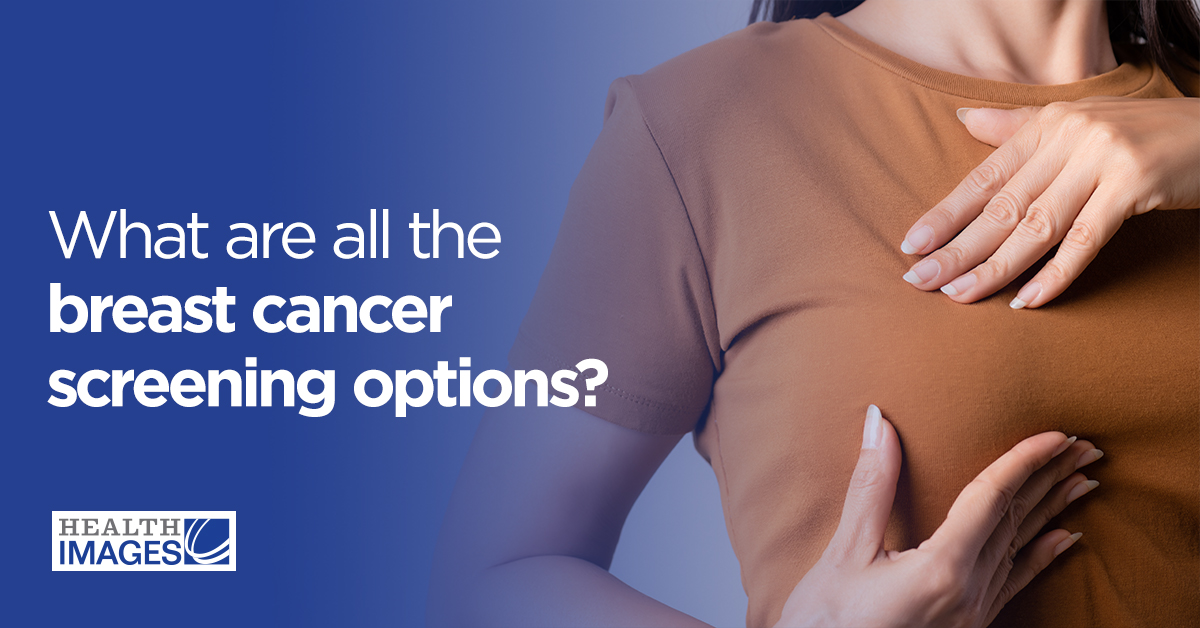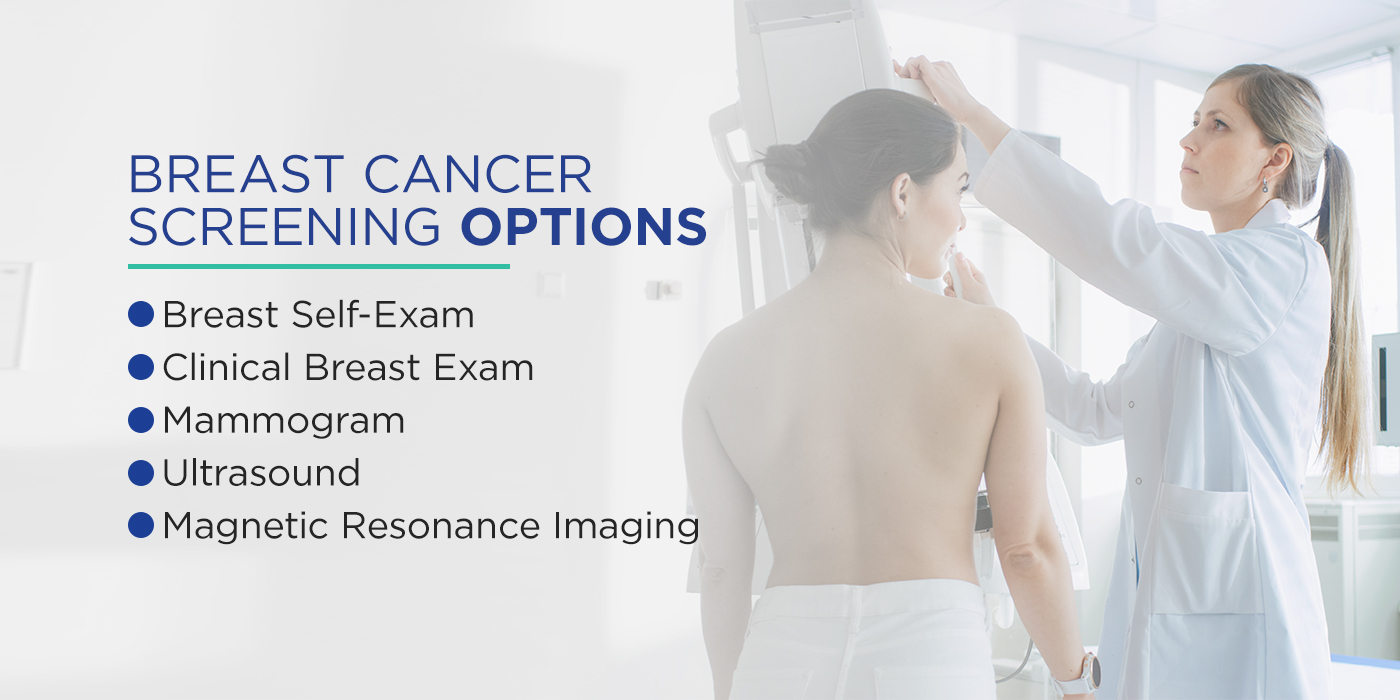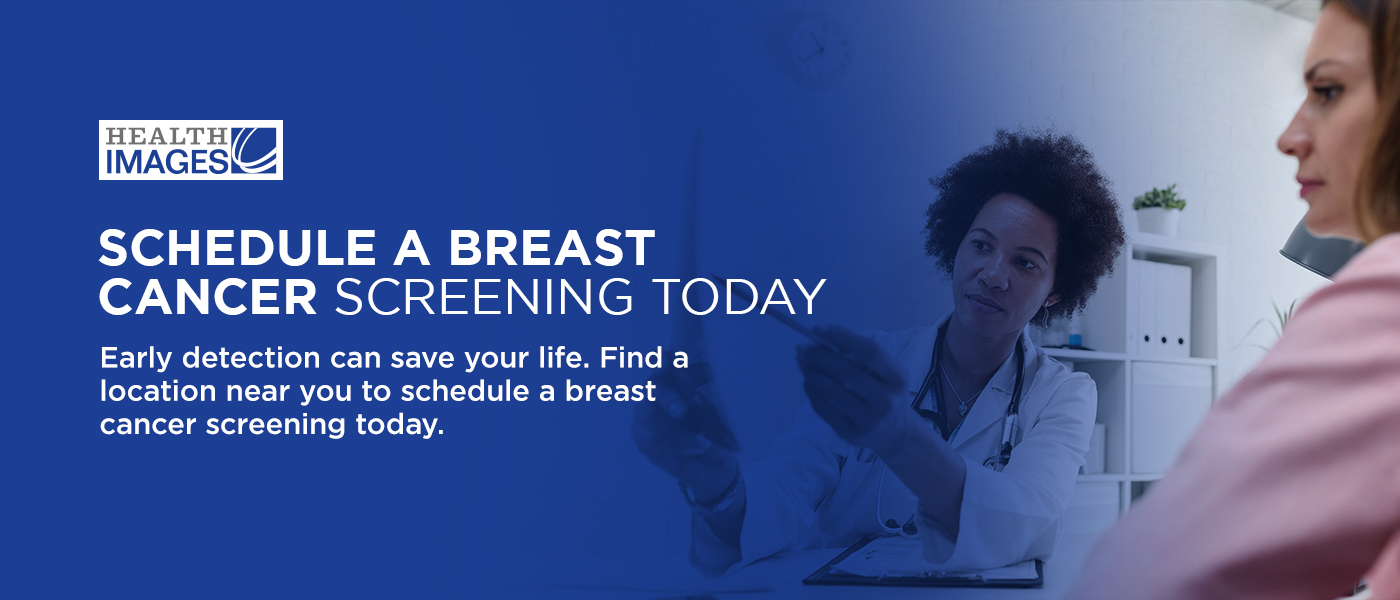What Are All the Breast Cancer Screening Options?
Breast cancer screening is a vital tool to detect the disease before any symptoms appear. Discovering breast cancer in the early stages simplifies treatment and significantly improves survival rates. When detected early, the relative five-year survival rate of localized breast cancer is 99%. Women and their health care providers should discuss mammograms and other types of breast exams. The most appropriate breast cancer screening for you will depend on your age, lifestyle and risk level.
This guide will explain breast cancer screening options so you can make an informed decision with your doctor.
The Importance of Breast Cancer Screenings
Breast cancer screenings are the most reliable way to detect the disease as soon as possible. The technology can discover breast cancer before any symptoms appear, while it’s small and easier to treat successfully. Nearly 13% of women in the U.S. will develop invasive breast cancer within their lifetime. Breast cancer screenings can help save their lives.
Early detection is crucial for preventing deaths from breast cancer. One study showed that women with breast cancer who participated in regular screenings had a 60% lower risk of dying within 10 years of their diagnosis and a 47% lower risk within 20 years. Breast cancer screenings are the first line of defense against the disease to significantly improve the odds of successful treatment and recovery.
Breast Cancer Screening Options
Adult women of all ages should receive breast cancer screenings in some form. A physician can recommend the best option based on your age, family history and other risk factors. Here are the most common screening tools for breast cancer.
1. Breast Self-Exam
Women can perform a breast self-exam from home. The lifesaving procedure is simple and only takes a few moments. Forty percent of women diagnosed with breast cancer detected a lump themselves. All women should examine their breasts at least once a month, in addition to other breast cancer screenings. Follow these easy steps to perform a breast self-exam.
- Step one: While you’re taking a shower, use your index, middle and ring finger to gently press around your breast and armpit area on both sides of your chest. Use light, medium and firm pressure to examine the entire depth of your breast tissue. Carefully feel for any hard spots, thickening or lumps.
- Step two: Use a mirror to perform a visual inspection of your breasts. With your arms at your sides, inspect your chest in a relaxed position. Then, put your arms above your head and look for any strange swelling, puckering or divots in your breast tissue. Finally, lower your arms and flex your chest muscles by pressing your palms into your hips. Check again for any unusual changes. You may notice a slight variation in your breasts’ size, but that is common for most women.
- Step three: Lie down on a comfortable surface to spread your breast tissue evenly across your chest. Use a pillow to prop up your right shoulder and tuck your right hand behind your head. Using your left hand, gently press your three middle fingers around your right breast and armpit area. Feel for any lumps or discharge from your nipple. Repeat the same process on your left breast.
2. Clinical Breast Exam
A trained health professional will administer a clinical breast exam during your regular physical assessment, typically once a year. The clinician will gently press on both of your breasts, underarms and up toward your collarbone to check for lumps and other signs of breast cancer. Experienced physicians might notice unusual masses you missed during your breast self-exam.
3. Mammogram
A mammogram is a type of x-ray taken of the breast tissue to capture early signs of breast cancer. They are effective at detecting cancer nodules that are too small to find during a breast exam. Mammograms reveal tumors up to three years before they’re large enough to feel.
During a mammogram, you will place one breast at a time onto the mammography machine. A paddle will slowly compress your breast to capture a detailed image of your tissue.
Mammograms are among the best breast cancer diagnostic tools, with about 87% accuracy depending on your age and breast density. Mammograms are even more effective at correctly identifying breast cancer in women over 50. They reduce the risk of dying from breast cancer by 30%.
A 3D mammogram or tomosynthesis is the most recent advancement in mammography. It produces a three-dimensional image with more detail to help radiologists distinguish harmless abnormalities from tumors. When combined with a traditional 2D mammogram, it can increase diagnostic accuracy and decrease the need for follow-up screenings.
The United States Preventive Services Task Force recommends getting a mammogram every two years for women ages 50 to 74 with an average risk for breast cancer. Other organizations like the American Cancer Society recommend yearly screenings as early as age 40. Speak with your physician to weigh the benefits and risks.
4. Ultrasound
Doctors often recommend breast ultrasounds when a mammogram detects an abnormality. Ultrasounds use high-frequency sound waves to capture images of your breast tissue. The process is entirely safe and painless. An ultrasound technologist will gently glide a handheld probe across your breast to scan for tumors. The sound waves will bounce off firm tissue to reveal irregularities.
5. Magnetic Resonance Imaging
Health professionals use breast MRIs to screen women with a higher risk of breast cancer. The American Cancer Society recommends that women age 30 and older with a lifetime risk of breast cancer above 20 to 25% should have a breast MRI and mammogram every year. They don’t suggest this screening method for women with a lifetime risk of breast cancer below 15%.
MRI breast examinations capture a detailed image of the tissue using radio waves and a powerful magnet linked to a computer. An MRI with contrast will capture even more detail, which requires a fluid injection through an IV. During the MRI, you will lie face down inside the machine while it captures images of your breast tissue.
Schedule a Breast Cancer Screening Today
Adult women of all ages should receive regular breast cancer screenings. Consult with your doctor to determine the best diagnostic screenings to monitor your breast health. Health Images is here to help with advanced imaging services and a compassionate staff to guide you through the process. We offer mammograms, ultrasounds and MRIs with rapid results to give you peace of mind.
Early detection can save your life. Find a location near you to schedule a breast cancer screening today.
Call To Schedule Your Appointment
Linked Sources:
https://www.nationalbreastcancer.org/early-detection-of-breast-cancer/
https://www.breastcancer.org/symptoms/understand_bc/statistics
https://www.webmd.com/breast-cancer/news/20181109/mammograms-do-save-lives-study-shows
https://www.nationalbreastcancer.org/breast-self-exam
https://www.healthimages.com/services/mammography/
https://www.komen.org/breast-cancer/screening/mammography/accuracy/
https://www.healthimages.com/services/mammography/
https://www.healthimages.com/what-to-expect-from-3d-mammogram/
https://www.uspreventiveservicestaskforce.org/uspstf/recommendation/breast-cancer-screening
https://www.cdc.gov/cancer/breast/pdf/breast-cancer-screening-guidelines-508.pdf
https://www.healthimages.com/breast-ultrasound-vs-mammography/
https://www.healthimages.com/services/ultrasound-sonogram/
https://www.healthimages.com/services/mr-breast/
https://www.healthimages.com/locations/
Other Sources:
https://www.cancer.gov/types/breast/patient/breast-screening-pdq
https://www.mskcc.org/cancer-care/types/breast/mammograms-breast-exams






